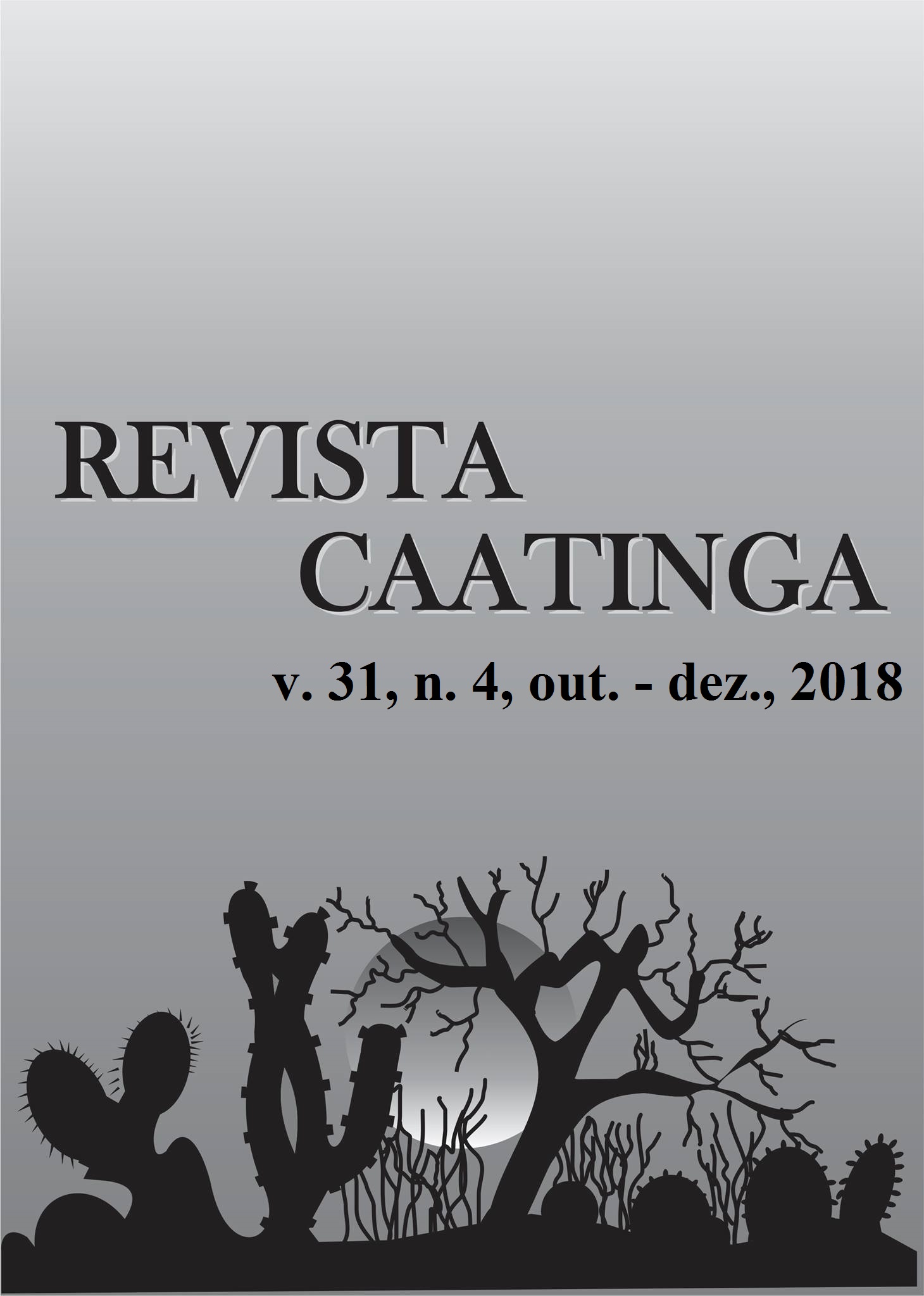EFFECT OF AQUEOUS EXTRACT OF Prosopis juliflora ON THE CONTROL OF THE MITE Tetranychus bastosi IN PHYSIC NUT
DOI:
https://doi.org/10.1590/1983-21252018v31n429rcKeywords:
Natural acaricide. Residual effect. Tetranychidae. Mesquite. Phytotoxicity. Jatropha curcas.Abstract
The objective of this study was to evaluate the efficiency, phytotoxicity and residual effect of the aqueous extract of leaves of Prosopis juliflora (Sw.) DC (Fabaceae) for Tetranychus bastosi Tuttle, Baker & Sales (Acari: Tetranychidae) on Jatropha curcas L. (Euphorbiaceae). For the evaluation of the control efficiency, physic nut plants were infested with 30 adult mite females and after 12 days were sprayed with the lethal concentrations (m/v) of the extract (LC50 = 53.45% or CL90 = 85.35%) and with distilled water (control), which corresponded to the treatments. After 24, 48, 72, 96 and 120 hours after application of the extract, two leaves of the lower, middle and upper third of the plants were sampled and the live mites were counted per treatment. The evaluation of the residual effect was done three, 24, 48, 96, 192 and 288 hours after spraying. To evaluate the phytotoxic effect of the extract, scores were given according to the intensity of the symptoms in the plants. Control efficiency was verified throughout the evaluated period, with an average of 81.67% for LC50 and 73.05% for LC90, with no significant difference between the evaluation intervals. The extract had a low residual effect on T. bastosi, but at the end of 12 days the average percentage of oviposition reduction of mite was 49.21% and 68.86% for LC50 and LC90, respectively. The plants did not present phytotoxicity. P. juliflora extract presents potential for the alternative control of T. bastosi in physic nut due to its efficiency on the mortality of this mite, oviposition reduction of females and absence of phytotoxic effect in the plants.
Downloads
Downloads
Published
Issue
Section
License
Os Autores que publicam na Revista Caatinga concordam com os seguintes termos:
a) Os Autores mantêm os direitos autorais e concedem à revista o direito de primeira publicação, com o trabalho simultaneamente licenciado sob a Licença Creative Commons do tipo atribuição CC-BY, para todo o conteúdo do periódico, exceto onde estiver identificado, que permite o compartilhamento do trabalho com reconhecimento da autoria e publicação inicial nesta revista, sem fins comerciais.
b) Os Autores têm autorização para distribuição não-exclusiva da versão do trabalho publicada nesta revista (ex.: publicar em repositório institucional ou como capítulo de livro), com reconhecimento de autoria e publicação inicial nesta revista.
c) Os Autores têm permissão e são estimulados a publicar e distribuir seu trabalho online (ex.: em repositórios institucionais ou na sua página pessoal) a qualquer ponto antes ou durante o processo editorial, já que isso pode gerar alterações produtivas, bem como aumentar o impacto e a citação do trabalho publicado (Veja O Efeito do Acesso Livre).







